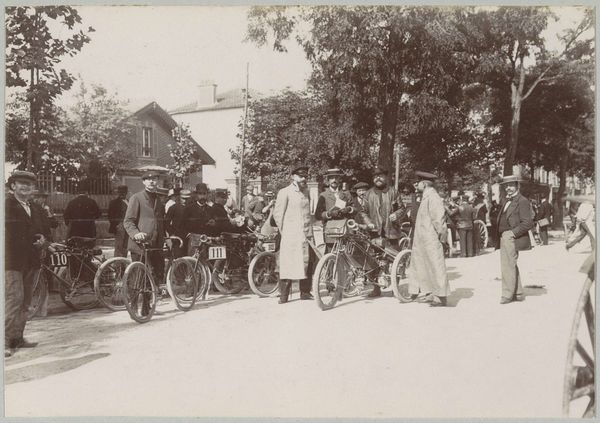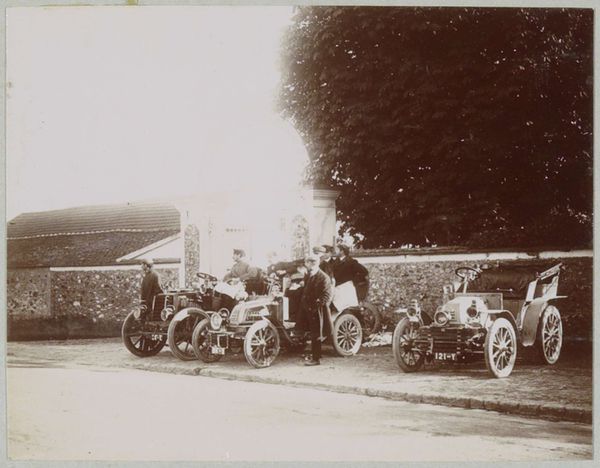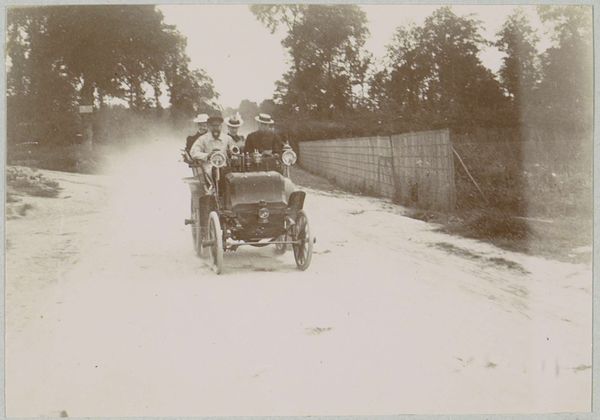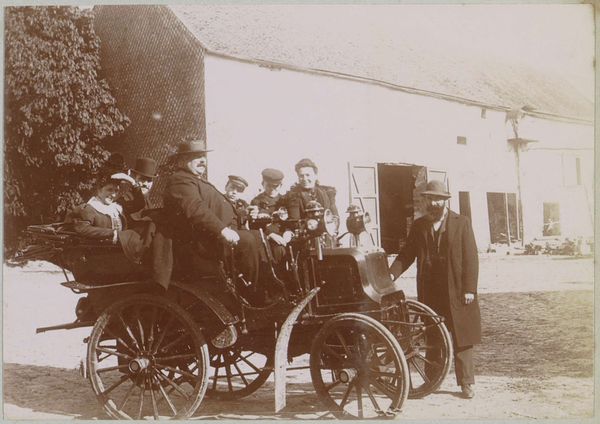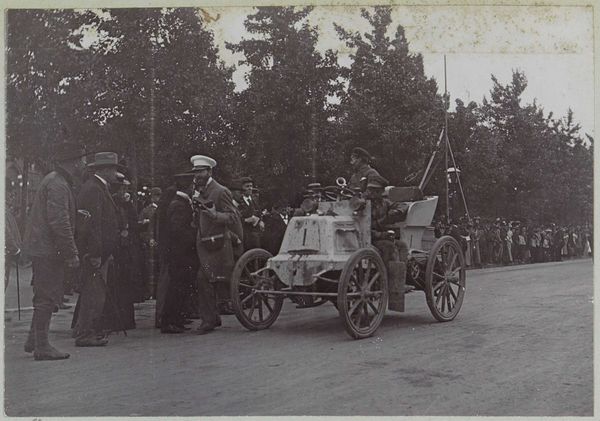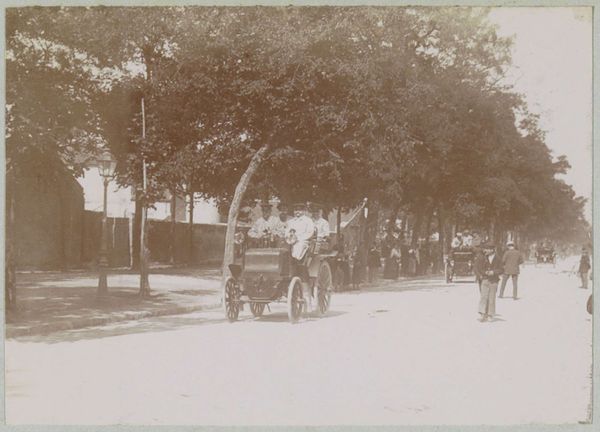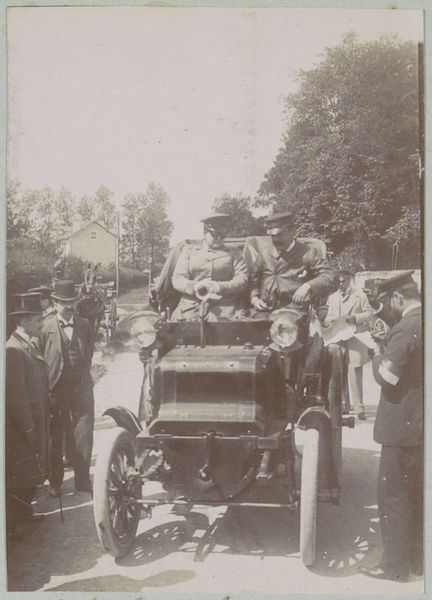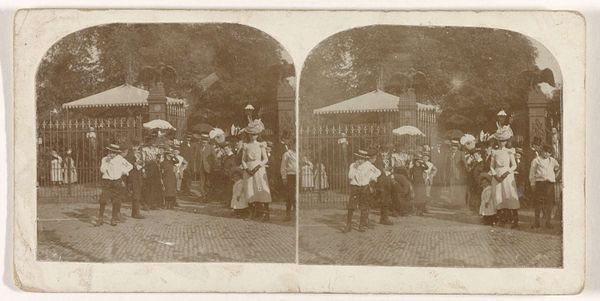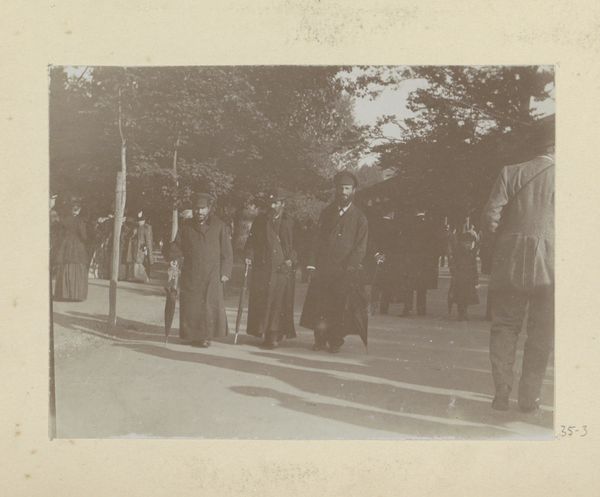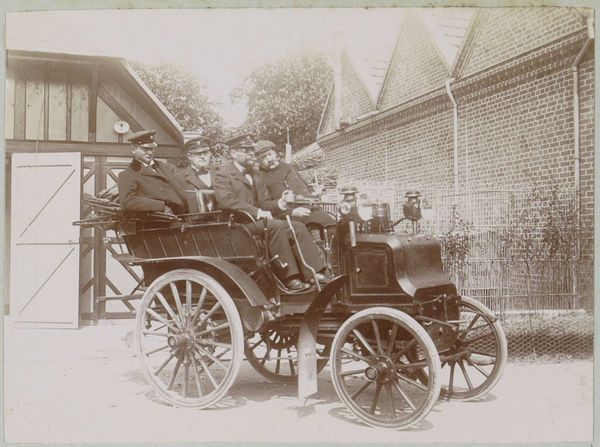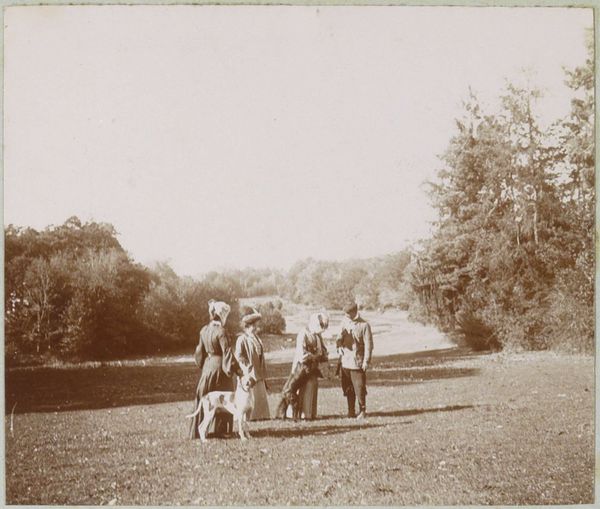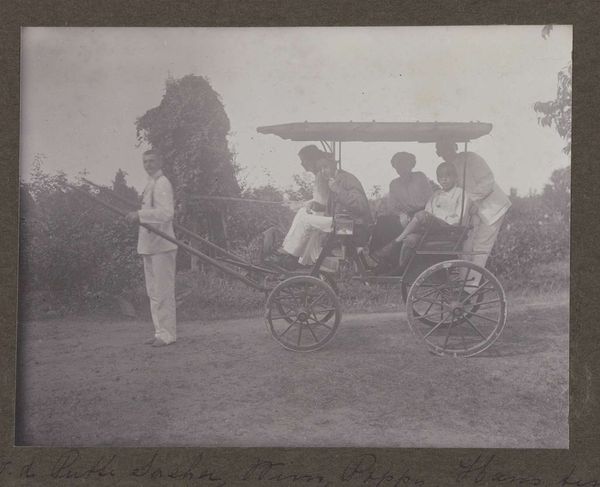
Deelnemers aan een rallye in Fontainebleau: een automobiel en twee gemotoriseerde driewielers Possibly 1899
0:00
0:00
delizy
Rijksmuseum
print, photography
# print
#
archive photography
#
street-photography
#
photography
#
historical photography
#
19th century
Dimensions: height 97 mm, width 162 mm
Copyright: Rijks Museum: Open Domain
Curator: This print, of uncertain date, but attributed to possibly 1899, captures participants in a rally in Fontainebleau: an automobile and two motorized tricycles. It's part of the Rijksmuseum's collection. What are your first thoughts? Editor: Pure, unadulterated Belle Époque optimism! You know, that feeling of newfangled contraptions promising a thrilling future, even if those 'machines' look a little… rickety. I can practically smell the gasoline and hear the sputtering engines. Curator: Absolutely! It speaks to the rapid technological changes of the late 19th century. Consider the social context—the burgeoning middle class, increased leisure time, and this collective fascination with speed and innovation. This rally represents not just technological advancement but also shifting social hierarchies. Who had access to these early automobiles, and what did it mean to participate in such an event? Editor: That's a really interesting point. These aren’t just modes of transport; they’re status symbols. The fellows standing around look like they are itching to hop on, but also maybe a little intimidated, wouldn't you agree? There’s a real curiosity mixed with reservation etched in their postures, almost as if they aren’t quite sure what to make of it all. And there are only men… where are the women? It’s fascinating. Curator: Yes, exactly! The photograph reflects a predominantly male sphere, typical of the early automotive culture. The mechanics, the drivers, even the onlookers project a very specific idea of turn-of-the-century masculinity and the relationship of men with machines, adventure, and status. We see here not just the history of technology, but also of gender and social power dynamics. Editor: Looking at this image now, I feel a pang of nostalgia. Even with our fancy electric cars, that sense of limitless possibility has lost some of its sheen. We have reached this new age of eco-consciousness which in a way changed our perspective on technology’s promises. Curator: And that's the power of historical images, isn't it? To reflect on where we’ve come from, what we've gained, and perhaps what we've lost along the way. Editor: A quirky and illuminating window to the past, I would say.
Comments
No comments
Be the first to comment and join the conversation on the ultimate creative platform.
